In 2013, I was lucky enough to win the Macra na Feirme/RDS Young Sheep Farmer Scholarship. The aim of this scholarship is to provide the successful applicant with a travel bursary to gain a different perspective and hands-on experience of farming in a different country.
In doing so, he or she will hopefully encounter information or management practices of interest to Irish farmers that can also be adopted on his/her own farm. I chose to travel to New Zealand to study three main topics:
Shearing.Dipping.Foot care on a large farm enterprise.The main reason for picking these topics is that I am thinking of going into the shearing business, so I wanted to see first-hand how New Zealand shearers run things.
I am also currently looking into purchasing a mobile sheep dipping race. Lameness can be a real nuisance, and a big cost, to sheep systems, so I was very interested in exploring possible solutions for it.
Wealth of knowledge
Once I spent a bit of time on the first farm, I quickly found that these topics were not the only ones I would learn about. If anything, they were the easiest to answer.
As with most things with farming in NZ, it’s the scale that helps them sort out problems quicker than in any other country.
For instance, with foot care, any sheep with lameness issues gets sent to the factory so they cannot pass on their hereditary problems.
On the farms visited, rams were the only sheep to get turned up to trim their feet prior to the mating season. Lambs may be put through a footbath if kept later in the season or as replacements.
Dipping is done straight after shearing or with a pour-on in a lot of places. These farmers found this timing to be the most effective way to get into the skin.
Lambs also get a pour-on at tail docking and, depending on withdrawal periods and finishing dates, lambs may also receive another treatment a few months later.
The run-through dipping races are very popular, as they are very handy and effective at preventing blowfly.
Changing industry
Farmers do a lot of crutching. Anything that goes to the factory that is any way dirty must be crutched, as sheep will be turned away if dirty.
Shearing has changed a bit over the last few years. Farmers once found shearing and wool sales to be a very profitable income generator from sheep farming, but it is now coming under some pressure.
The price of wool has dropped and this has led to some farmers, who would once have shorn twice a year, shearing once a year or every eight months.
Farmers voted last year on the possible introduction of a wool levy to try to improve the wool sector and its markets, but unfortunately it was not passed.
One of the farms where I stayed was that of Robert and Sandra Faulkner. It was Sandra who was spearheading the drive for the levy. A lot of time and effort went into the push and it was a shame it was not passed, as it would have given a lift to the wool industry.
One noticeable aspect of shearing is that the farmers bag their daggings separately and get a reduced price for those bags.
This is something that should be looked at in Ireland, as it might help get better prices for our fleeces and entice farmers to do a harder separation of wool, which would add a further element of quality.
Breeding and genetics
Probably the biggest aspect of sheep farming that I noticed in New Zealand is breeding and genetics. The NZ industry is well ahead of Ireland in this regard. Again, the scale is a huge help in getting buy-in and results quicker than most countries.
I was lucky enough to visit some ram breeders who have a lot of recording done, some with 30 years’ experience and figures behind them.
Huge research has been done in worm resistance. For instance, one breeder I visited only keeps and sells rams with resistance traits.
Also, they have done a lot in gene marking, pinpointing genes for cold tolerance, footrot resistance and the fecundity gene for twin litter size.
As a member of Sheep Ireland, it was great to see the potential improvements available to Irish sheep farmers in the not too distant future.
I know it will take time, but if we get to where NZ is now, it will be a big step in helping the sheep sector thrive and hopefully entice more young farmers into the industry.
Sheep can work very well when grazed with cattle; it helps pasture quality and improves animal performance. Very few sheep farmers have only sheep; they nearly all practice sheep and cattle mixed grazing, with the sheep on a rotation.
Significant opportunities
I know it is easy to say if we do this and that things should improve in certain aspects from looking at New Zealand’s approach.
True – it’s a lot easier for them with their numbers. However, one thing I’ve learned is always have an eye on the bigger picture and look a few years down the line to where you would like to get to.
You may have to take a hit on numbers in the first couple of years to try to weed out the undesirable traits in your flock. I know it will be tough for a while, but it will stand to your flock in the long run, make life easier and improve your ewe efficiency.
For sheep farmers buying rams, have a serious think about purchasing rams that have figures showing their breeding potential.
It is going to stand to your flock and improve your breeding for whichever traits you’re looking to add to or improve.
From seeing what is hopefully going to be coming down the line with Sheep Ireland, we are going to be getting more and more information about our sheep.
After all, your ram is half your flock and he is going to have an impact for a minimum of five years.
Improving breeding and focusing on breed values rather than solely looks will also add to longevity.
Investment in handling
One other thing is the handling units on every farm are great. Again, numbers help justify the initial outlay for these costly set ups, but fixed and mobile units are worth every penny. They will pay for themselves tenfold over time.
If the grant reopens for sheep handling equipment and fencing, I would advise anyone who can to take advantage and avail of it. The numbers you can get through in a day of working with a good handling unit are unreal. It will be the second best investment you ever make, behind the ram with figures.
If you have good breeding, a simple but effective handling unit, sufficient fencing and a good sheepdog, you’re on the right road to making a good go of sheep farming.
I’ve seen and learned plenty from my time in New Zealand, met a lot of lovely, hospitable, friendly people and families along the way.
Without these people, I would not have had any place to go.
I would like to say a huge thank you to the RDS and Macra na Feirme for such a great opportunity, one which I thoroughly enjoyed and have benefited greatly from. It has opened my eyes and given me plenty of ideas for home.
I would encourage any young farmers out there who are interested in sheep farming to apply for any future scholarships.
Make the most of it, as chances like this don’t come around too often.
Thank you to my girlfriend for taking time off work and accompanying me on this trip of a lifetime.
Finally, a big thank you to all the families who took us in and treated us so well and showed us so much about their well-run farms.
Farm facts
There are too many farms to go into significant detail about their farming systems – a brief overview of some of the farms shows the scale they have. Compare this to Ireland where the average flock size is around 100 sheep.
Farm 1:
650 ewes and 250/300 hoggets.Coopworth is the base breeding in the flock. Currently use Romney, Coopworth and Texel rams.1,300 lambs this year; lambing percentage of 1.37-1.45.Farm 2:
1,700 ewes and 400 hoggets.Scanned 150%.Coopworth ewes with Romney rams.Farm 3:
1,200 Romney ewes and 400/500 Romney hoggets.200 Romney hogget rams to sell each year.Buys in lambs and sometimes ewes with lambs at foot each year; expecting to finish 15,000 lambs this year.Farm 4:
5,000 ewes and 1,500/2,000 hoggets.Easicare sheep.Aim is to wean 160% and finish to 18kg carcase at 100 days.16,000 stock units; 50% sheep and 50% cattle.49% of farm income is from the sheep.Farm 5:
1,000 ewes, no hoggets.All lambs to the factory, buy in all replacements.Roughly 1,400 lambs to the factory per year.Lamb over a six-week period.400 lambs finished by weaning time this year.Farm 6:
5,000 ewes and 1,200 hoggets.Scanned 170%; tailed 160%; weaned 140%.Two farms, 1,500ha and 500ha, an hour and a half apart.Farm 7: (field day)
Total sheep – 17,189Breeding sheep – 14,528.Total area – 18,165ha.
In 2013, I was lucky enough to win the Macra na Feirme/RDS Young Sheep Farmer Scholarship. The aim of this scholarship is to provide the successful applicant with a travel bursary to gain a different perspective and hands-on experience of farming in a different country.
In doing so, he or she will hopefully encounter information or management practices of interest to Irish farmers that can also be adopted on his/her own farm. I chose to travel to New Zealand to study three main topics:
Shearing.Dipping.Foot care on a large farm enterprise.The main reason for picking these topics is that I am thinking of going into the shearing business, so I wanted to see first-hand how New Zealand shearers run things.
I am also currently looking into purchasing a mobile sheep dipping race. Lameness can be a real nuisance, and a big cost, to sheep systems, so I was very interested in exploring possible solutions for it.
Wealth of knowledge
Once I spent a bit of time on the first farm, I quickly found that these topics were not the only ones I would learn about. If anything, they were the easiest to answer.
As with most things with farming in NZ, it’s the scale that helps them sort out problems quicker than in any other country.
For instance, with foot care, any sheep with lameness issues gets sent to the factory so they cannot pass on their hereditary problems.
On the farms visited, rams were the only sheep to get turned up to trim their feet prior to the mating season. Lambs may be put through a footbath if kept later in the season or as replacements.
Dipping is done straight after shearing or with a pour-on in a lot of places. These farmers found this timing to be the most effective way to get into the skin.
Lambs also get a pour-on at tail docking and, depending on withdrawal periods and finishing dates, lambs may also receive another treatment a few months later.
The run-through dipping races are very popular, as they are very handy and effective at preventing blowfly.
Changing industry
Farmers do a lot of crutching. Anything that goes to the factory that is any way dirty must be crutched, as sheep will be turned away if dirty.
Shearing has changed a bit over the last few years. Farmers once found shearing and wool sales to be a very profitable income generator from sheep farming, but it is now coming under some pressure.
The price of wool has dropped and this has led to some farmers, who would once have shorn twice a year, shearing once a year or every eight months.
Farmers voted last year on the possible introduction of a wool levy to try to improve the wool sector and its markets, but unfortunately it was not passed.
One of the farms where I stayed was that of Robert and Sandra Faulkner. It was Sandra who was spearheading the drive for the levy. A lot of time and effort went into the push and it was a shame it was not passed, as it would have given a lift to the wool industry.
One noticeable aspect of shearing is that the farmers bag their daggings separately and get a reduced price for those bags.
This is something that should be looked at in Ireland, as it might help get better prices for our fleeces and entice farmers to do a harder separation of wool, which would add a further element of quality.
Breeding and genetics
Probably the biggest aspect of sheep farming that I noticed in New Zealand is breeding and genetics. The NZ industry is well ahead of Ireland in this regard. Again, the scale is a huge help in getting buy-in and results quicker than most countries.
I was lucky enough to visit some ram breeders who have a lot of recording done, some with 30 years’ experience and figures behind them.
Huge research has been done in worm resistance. For instance, one breeder I visited only keeps and sells rams with resistance traits.
Also, they have done a lot in gene marking, pinpointing genes for cold tolerance, footrot resistance and the fecundity gene for twin litter size.
As a member of Sheep Ireland, it was great to see the potential improvements available to Irish sheep farmers in the not too distant future.
I know it will take time, but if we get to where NZ is now, it will be a big step in helping the sheep sector thrive and hopefully entice more young farmers into the industry.
Sheep can work very well when grazed with cattle; it helps pasture quality and improves animal performance. Very few sheep farmers have only sheep; they nearly all practice sheep and cattle mixed grazing, with the sheep on a rotation.
Significant opportunities
I know it is easy to say if we do this and that things should improve in certain aspects from looking at New Zealand’s approach.
True – it’s a lot easier for them with their numbers. However, one thing I’ve learned is always have an eye on the bigger picture and look a few years down the line to where you would like to get to.
You may have to take a hit on numbers in the first couple of years to try to weed out the undesirable traits in your flock. I know it will be tough for a while, but it will stand to your flock in the long run, make life easier and improve your ewe efficiency.
For sheep farmers buying rams, have a serious think about purchasing rams that have figures showing their breeding potential.
It is going to stand to your flock and improve your breeding for whichever traits you’re looking to add to or improve.
From seeing what is hopefully going to be coming down the line with Sheep Ireland, we are going to be getting more and more information about our sheep.
After all, your ram is half your flock and he is going to have an impact for a minimum of five years.
Improving breeding and focusing on breed values rather than solely looks will also add to longevity.
Investment in handling
One other thing is the handling units on every farm are great. Again, numbers help justify the initial outlay for these costly set ups, but fixed and mobile units are worth every penny. They will pay for themselves tenfold over time.
If the grant reopens for sheep handling equipment and fencing, I would advise anyone who can to take advantage and avail of it. The numbers you can get through in a day of working with a good handling unit are unreal. It will be the second best investment you ever make, behind the ram with figures.
If you have good breeding, a simple but effective handling unit, sufficient fencing and a good sheepdog, you’re on the right road to making a good go of sheep farming.
I’ve seen and learned plenty from my time in New Zealand, met a lot of lovely, hospitable, friendly people and families along the way.
Without these people, I would not have had any place to go.
I would like to say a huge thank you to the RDS and Macra na Feirme for such a great opportunity, one which I thoroughly enjoyed and have benefited greatly from. It has opened my eyes and given me plenty of ideas for home.
I would encourage any young farmers out there who are interested in sheep farming to apply for any future scholarships.
Make the most of it, as chances like this don’t come around too often.
Thank you to my girlfriend for taking time off work and accompanying me on this trip of a lifetime.
Finally, a big thank you to all the families who took us in and treated us so well and showed us so much about their well-run farms.
Farm facts
There are too many farms to go into significant detail about their farming systems – a brief overview of some of the farms shows the scale they have. Compare this to Ireland where the average flock size is around 100 sheep.
Farm 1:
650 ewes and 250/300 hoggets.Coopworth is the base breeding in the flock. Currently use Romney, Coopworth and Texel rams.1,300 lambs this year; lambing percentage of 1.37-1.45.Farm 2:
1,700 ewes and 400 hoggets.Scanned 150%.Coopworth ewes with Romney rams.Farm 3:
1,200 Romney ewes and 400/500 Romney hoggets.200 Romney hogget rams to sell each year.Buys in lambs and sometimes ewes with lambs at foot each year; expecting to finish 15,000 lambs this year.Farm 4:
5,000 ewes and 1,500/2,000 hoggets.Easicare sheep.Aim is to wean 160% and finish to 18kg carcase at 100 days.16,000 stock units; 50% sheep and 50% cattle.49% of farm income is from the sheep.Farm 5:
1,000 ewes, no hoggets.All lambs to the factory, buy in all replacements.Roughly 1,400 lambs to the factory per year.Lamb over a six-week period.400 lambs finished by weaning time this year.Farm 6:
5,000 ewes and 1,200 hoggets.Scanned 170%; tailed 160%; weaned 140%.Two farms, 1,500ha and 500ha, an hour and a half apart.Farm 7: (field day)
Total sheep – 17,189Breeding sheep – 14,528.Total area – 18,165ha. 



















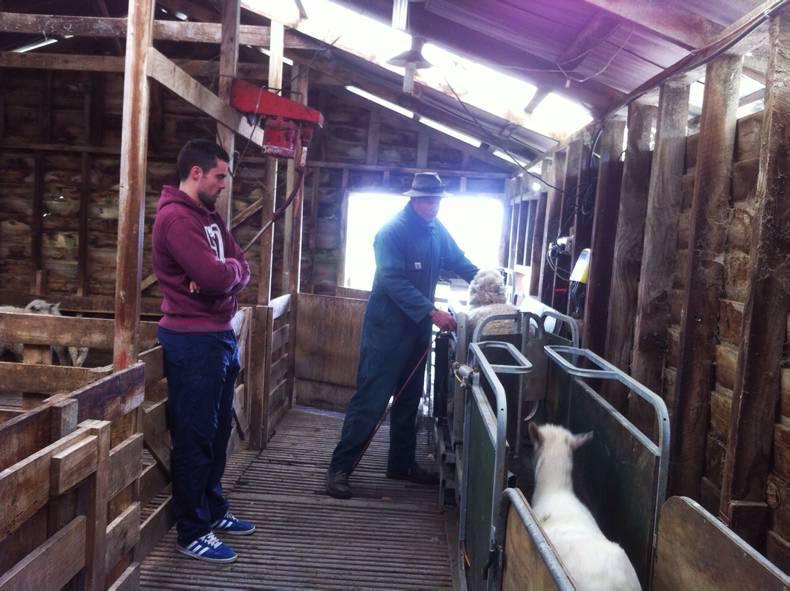
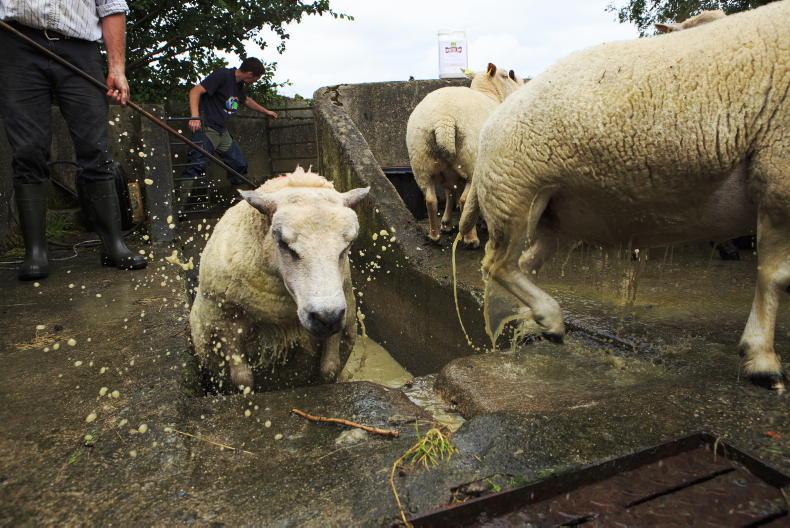
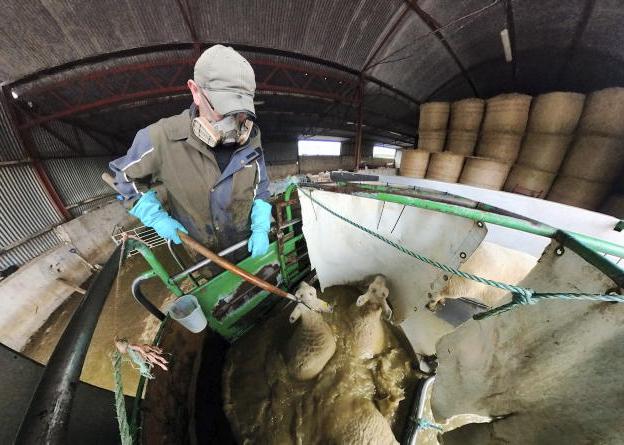
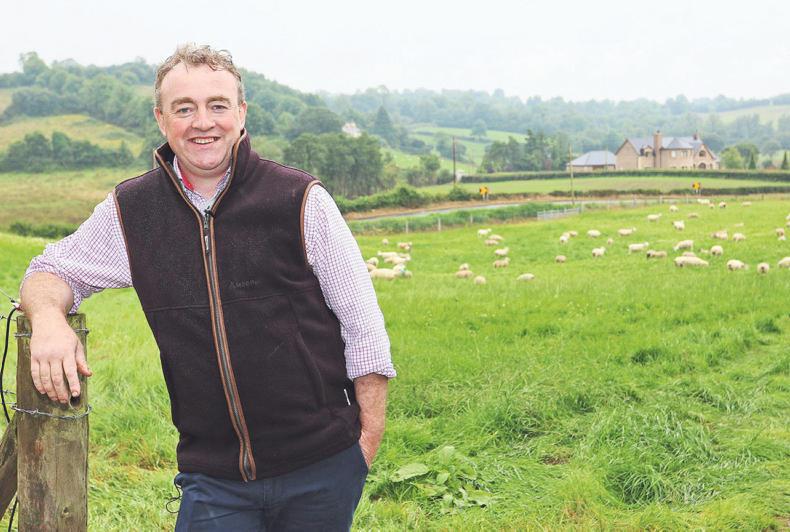
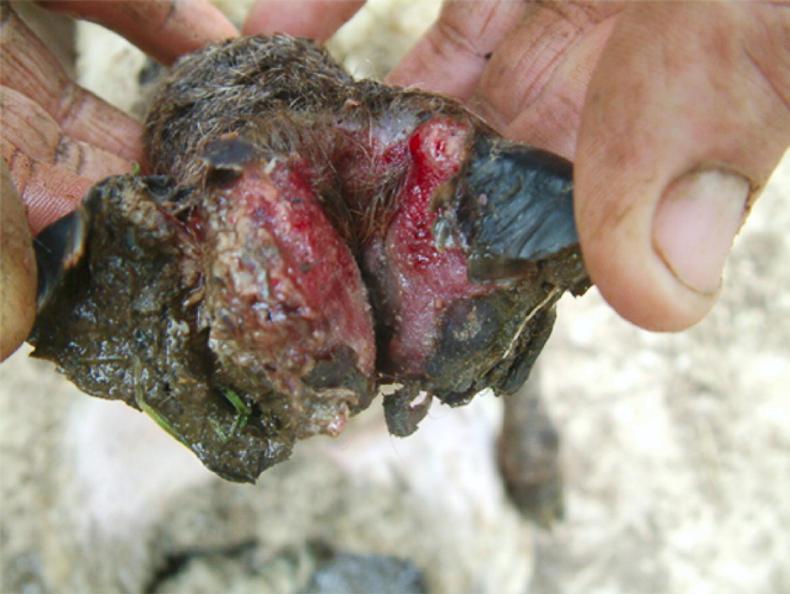
SHARING OPTIONS